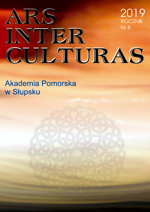PRZEMIANY SYMBOLIKI WILKA W LITERATURZE DZIECIĘCEJ
CHANGES IN THE SYMBOLISM OF THE WOLF IN THE LITERATURE FOR CHILDREN
Author(s): Anna NosekSubject(s): Literary Texts
Published by: Wydawnictwo Naukowe Akademii Pomorskiej w Słupsku
Keywords: symbolism of the wolf; literature for children; fairy tale
Summary/Abstract: The following article draws the reader’s attention to the symbolism of the wolf in the litera- ture for children in a diachronic view. The author depicts significant changes in the image and appraisal of the animal. She has shown that the wolf has gone through a peculiar pro- cess of metamorphosis from degradation (it symbolized evil in classic folk fairy tales), to affirmation in contemporary Polish literature for young readers. The character of the wolf, especially in contemporary postmodernist fairy tales, gains new interpretations and a novel positive axiology. The wolf is mainly portrayed as a domesticated dog or a playing child, it is considered a man’s friend, or reflects the primal nature which requires protection and re- spect (pro-ecological views). Moreover, the texts which place the wolf in the context of contemporary culture, especially consumerism, seem to be equally interesting.
Journal: Ars Inter Culturas
- Issue Year: 2019
- Issue No: 8
- Page Range: 53-66
- Page Count: 14
- Language: Polish

